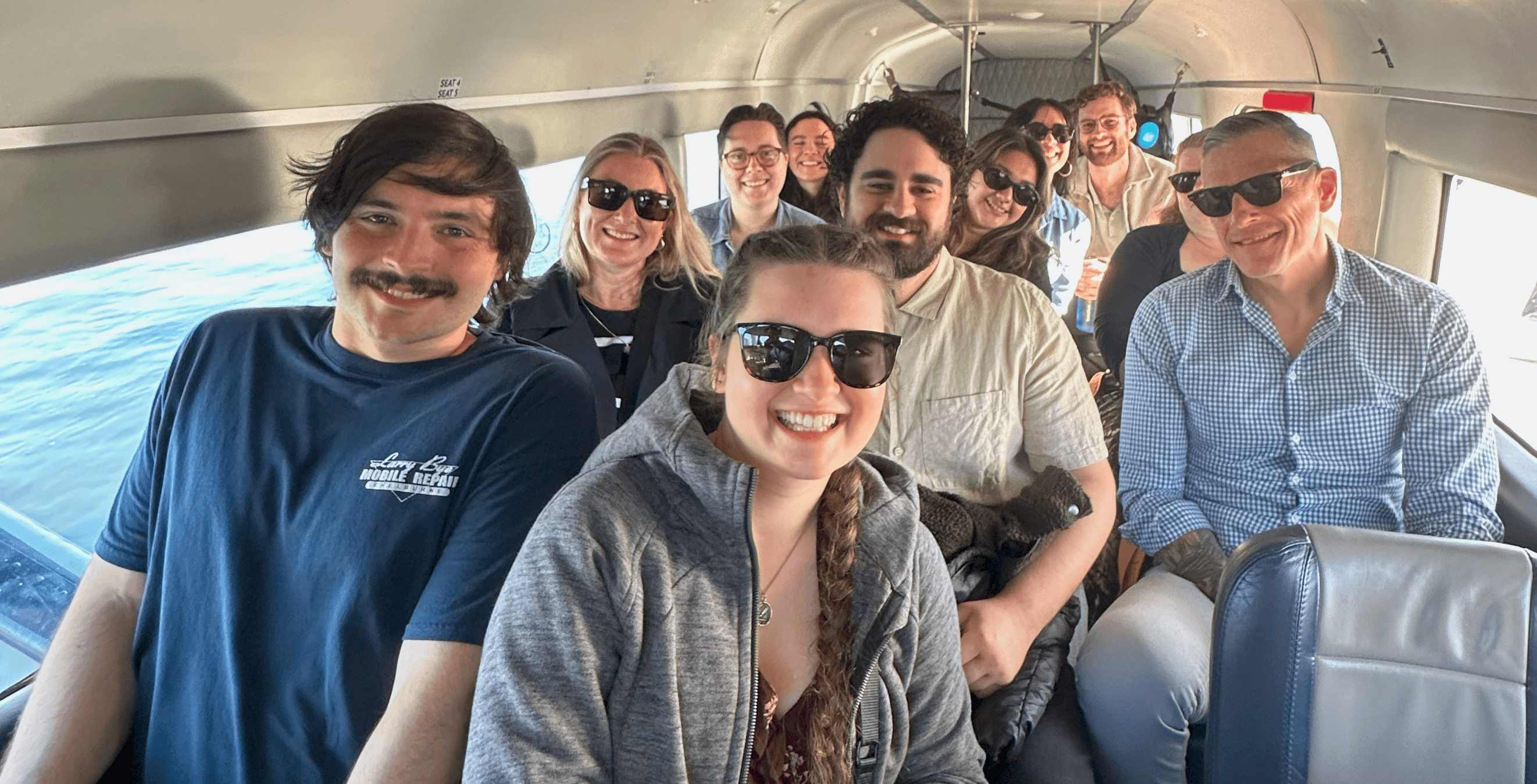Beyond Trends: What Web Summit Taught Us About Design, Creativity, and Storytelling
In a world where AI is reshaping creative work, what does it mean to design for humans?
At the 2025 Web Summit in Vancouver, Array’s design team explored how technology is changing the creative landscape and why empathy, emotion, and storytelling are more important than ever.
In this post, Jason, Emily, and Alex reflect on the sessions that challenged their thinking, the tools that piqued their curiosity, and the big question every designer is facing: How do we stay human in an automated world?
Find out what they’re bringing back to their work at Array.
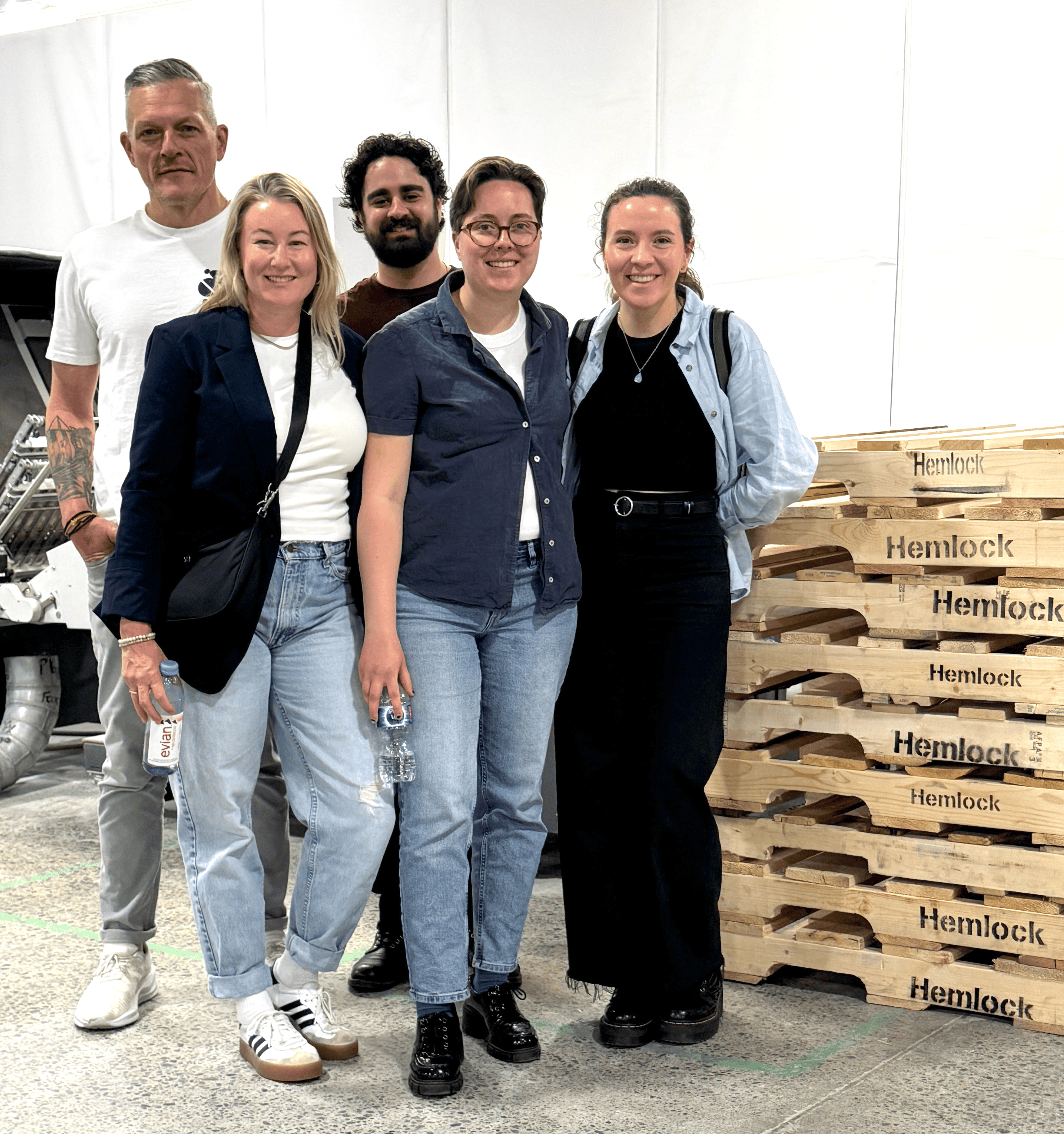
Jason Schultz on protecting the creative process in an AI-powered world
One of the speakers that stuck out to me was Sara Vienna, Chief Design Officer at Metalab. She delivered a standout talk titled “The New Rules of UX/UI: Human Intuition in the AI Era.”
Amid a sea of AI driven discussions, Sara’s perspective brought a refreshing focus back to the creative process. She emphasized that while AI tools have transformed workflows and unlocked new efficiencies, the human touch remains irreplaceable in design.
For Sara, creativity isn’t just aesthetic, it is emotional intelligence, storytelling, and empathy. She argued that great design connects with people on a human level, something algorithms alone cannot replicate.
Her talk underscored the idea that the future of UX/UI lies in a balanced partnership between machine intelligence and human intuition.
With thoughtful clarity, Sara made a compelling case for why designers must protect and prioritize the creative spark, reminding the audience that innovation without soul risks becoming meaningless.
It was a timely and inspiring message.
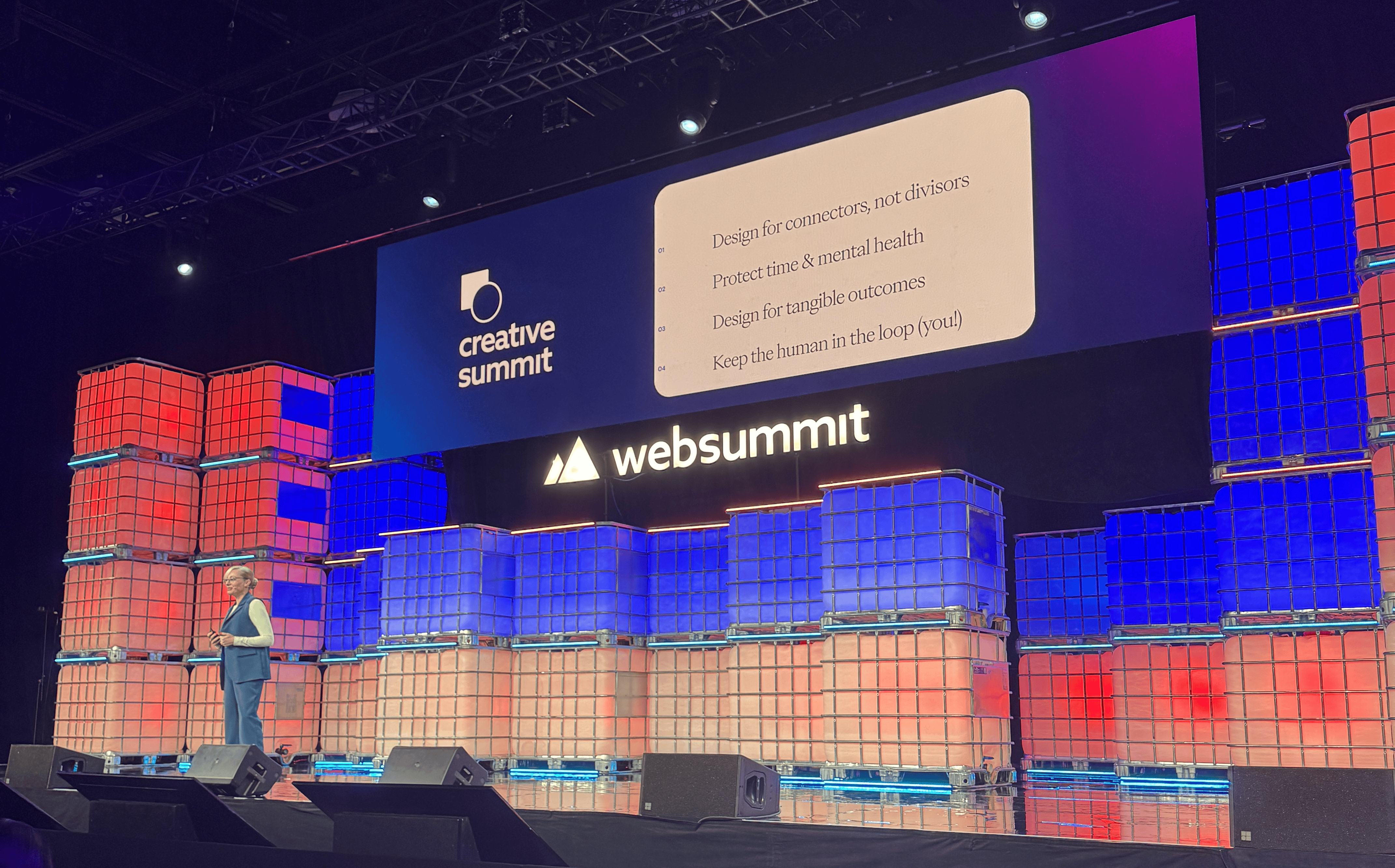
Emily Kiana on staying human, standing out, and embracing imperfection
As a designer it was interesting to see the intersection of tech, design, and brand through a variety of talks. AI was definitely a hot topic at this conference and something I think every industry is trying to navigate right now. The talks I really enjoyed were the ones that emphasized the importance of staying human in an increasingly automated world.
Here are a few key themes that stuck with me:
Stick to Your Values:
Brands that will succeed will be strategic, understand their values and communicate them well without wavering.
A term that was used a lot was “AI Slop.” Brands that will stand out are going to do something new and unexpected, rather than just chasing the trends.
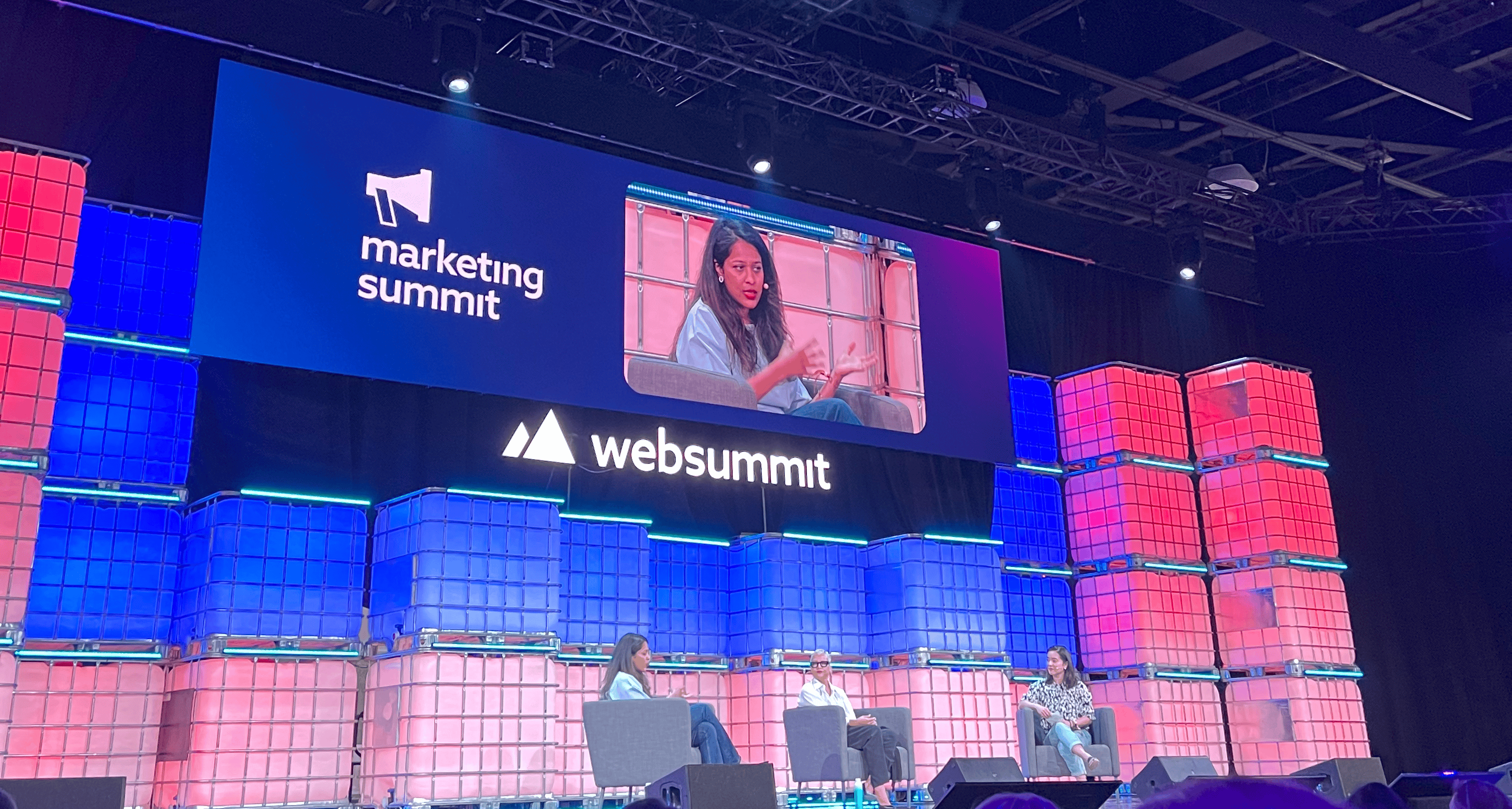
This isn’t a new concept in the world of brand and marketing, but I think at a time when it’s becoming easier and easier to replicate the expected, it’s becoming more and more important to do the unexpected.
At “Design with difference: Building brands in a copycat world” Liz Zack from Pepsi Co. talked about how since there’s a lot of sameness, it’s actually making it easier for brands to stand out. Look at it as an opportunity.
Sara Vienna, Chief Design Officer at Metalab in her talk “The New Rules of UX/UI: Human Intuition in the AI Era” said that we need to be “Stone cold editors. Anna Wintour level editors.”
Don’t settle. Looking at everything with an art direction lens is crucial. Don’t follow the crowd. As Sara Vienna said “Make your value proposition crystal clear to users.”
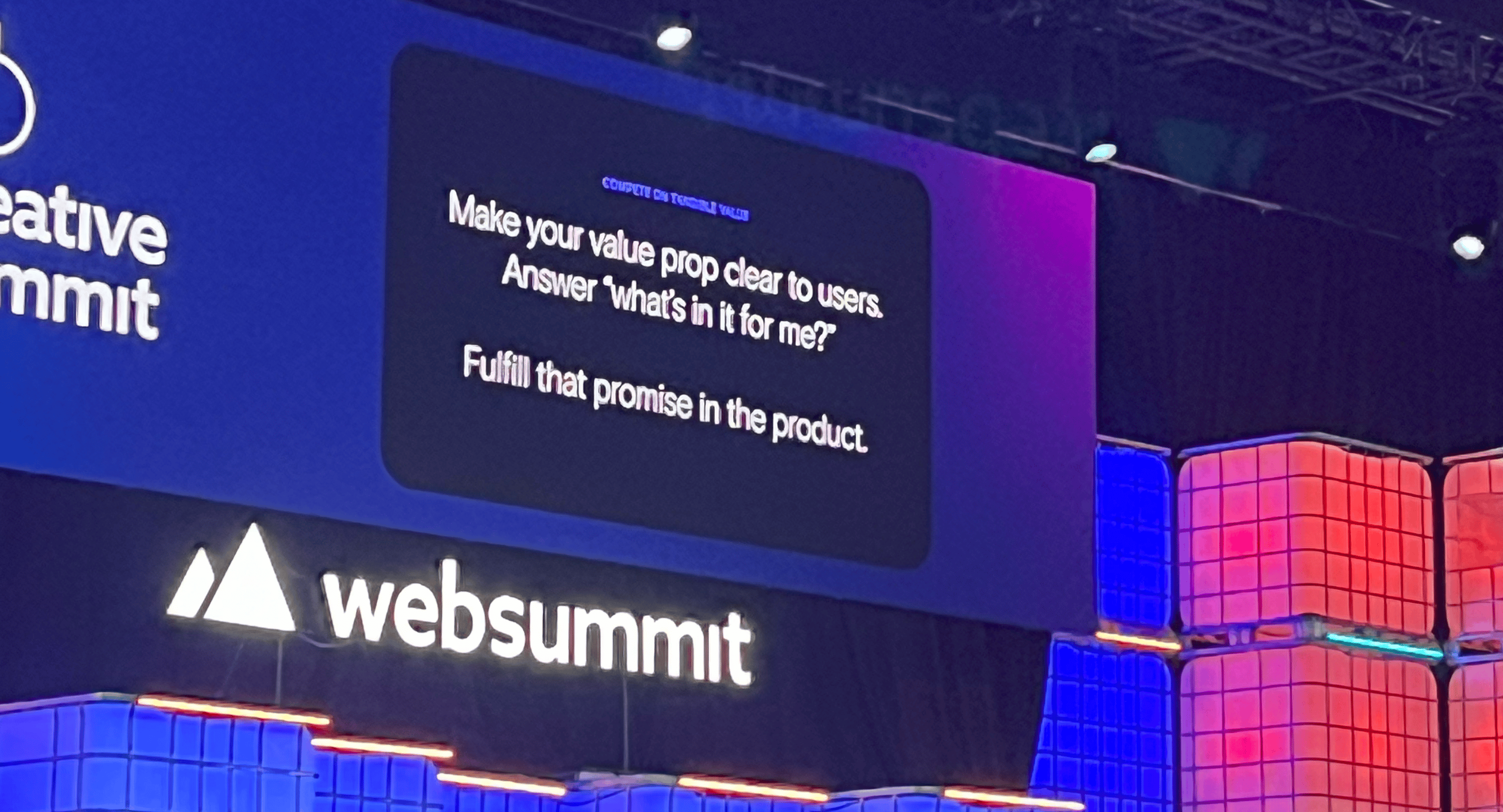
I’ve always thought about brands like they’re a person. The strategy is the brain, the messaging is the voice, the design is how that brand chooses to present itself to the world.
Like people, these things should align and be uniquely you. When they don’t align it’s confusing. Chasing trends that don’t align with your company leaves your customers (and team) confused by what you represent.
People are craving community & connection:
Joey Camire’s talk “Murder by Efficiency” he talked about how losing “the third place” is making people suffer. By creating more efficient processes, people are less likely to find community in public spaces. For example, with the rise of mobile ordering coffees, people are less likely to hang-out in coffee shops and are more likely to grab and go. Rather than having a third place, people are looking to social media and trends to find belonging, relatability, and community.
To me, this emphasized that we as a society are craving community and connection. When everything is online we’re looking for little communities where we can feel like we belong and where we feel a little less alone.
A few talks mentioned two concepts related to marketing that spoke to this.
- Find ways to have a direct and real connection with your audience. What do they need and how can you directly speak to them?
Evan Jones, Fender CMO spoke about how Fender is doing this really well by thinking about each segment of their audience and what they can GIVE them directly to help them meet their needs. Partnerships, education, and helping with marketing. Customer needs first, sales will follow. - Moving digital experiences into the physical world. Print isn’t dead. People are craving tangible real world experiences. Take the 15,000 people turnout to the conference as proof of that.
I think there’s an even bigger opportunity for gorilla marketing and doing unexpected things in the physical world.
Embrace Waste:
Joey Camire’ also talked about how many efficient systems collapse and lead to short sitedness. Slow down. Embrace the creative magic that happens in the slowness. Be strategic and thoughtful. He talked about how efficiency makes you stuck in your own narrow system.
One particular point that stuck with me was how “waste” in nature is what makes our ecosystems thrive ie) compost and fungi! They help with new growth! One of my favourite quotes from this talk was “yapping serves a purpose.”
What I thought was missing:
I didn’t go to every talk but the ones I did go to completely missed the points of accessibility and bias. I wasn’t shocked but I was disappointed by it.
AI may be helping with efficiency but it isn’t building accessible systems without bias. We as marketers have a responsibility to inclusion and accessible experiences.
I think that companies that will stand out even more are the ones that really do this well and with intention. I’m proud to be working at Array where this is top of mind.
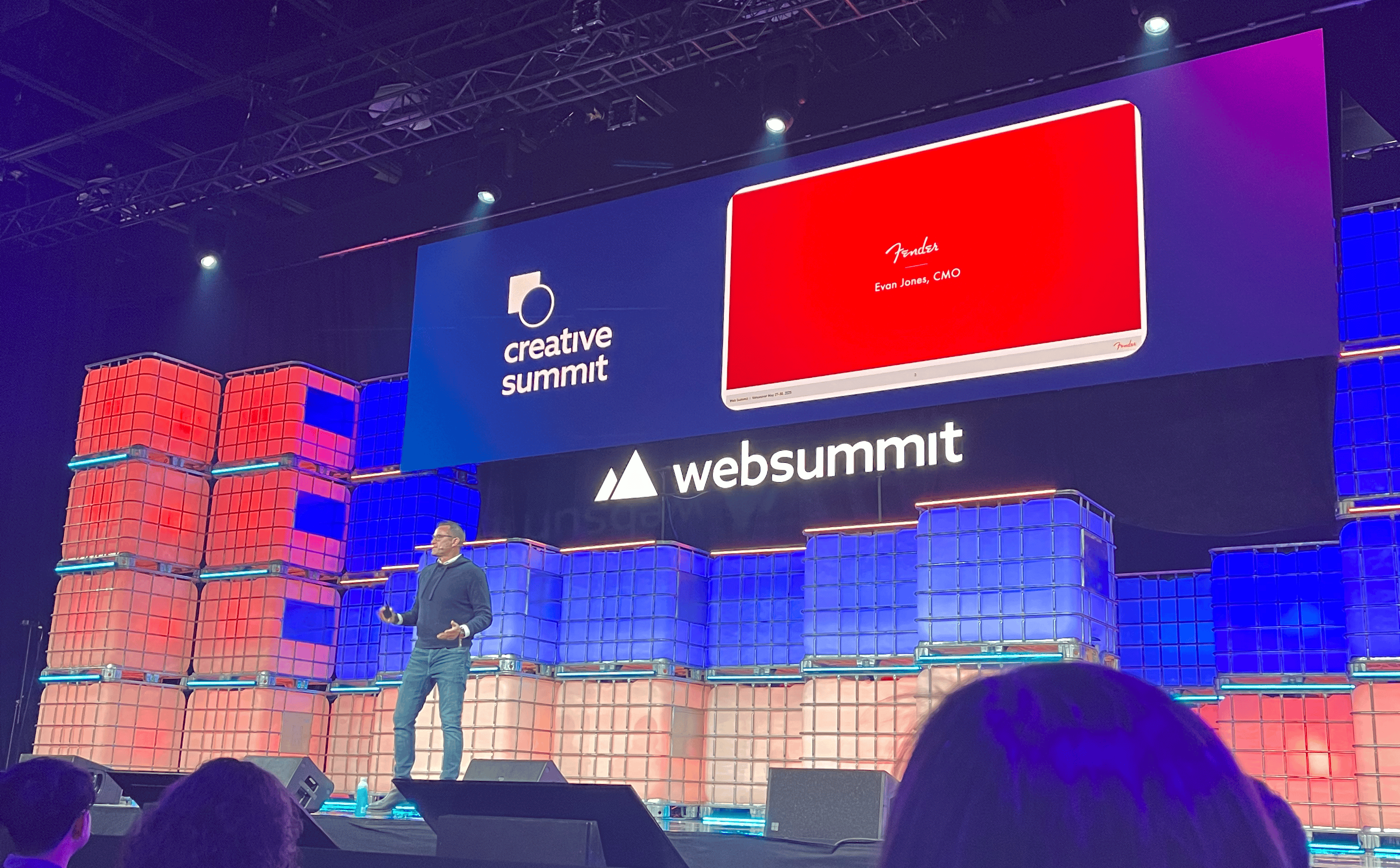
Alejandra Silva-Rojas on storytelling, emotion, and designing for connection
I’ve always known that AI should be a tool and not a replacement, but hearing it from so many speakers made me realize how important it is to lead with story in everything we do.
The more noise there is out there (automated content, non-stop notifications, data overload) the more powerful it becomes to pause and ask: What are we really trying to say?
As a designer, I’m always asking this question: What are we trying to communicate? The Summit reminded me that storytelling is the bridge to connection. That’s what makes us human. And with all the new tools coming out, especially in AI, there are so many exciting ways to use technology to deepen that connection.
One project that really stuck with me was the laugh tracker. This was an initiative that used AI to track kid’s laughter to figure out how “fun” a place was based on the amount of laughs it generated. It was a clever way of promoting tourism to a place not typically known for travel.
It reminded me that tech isn’t the be all and end all. What matters is how we use it to tell stories that move people.
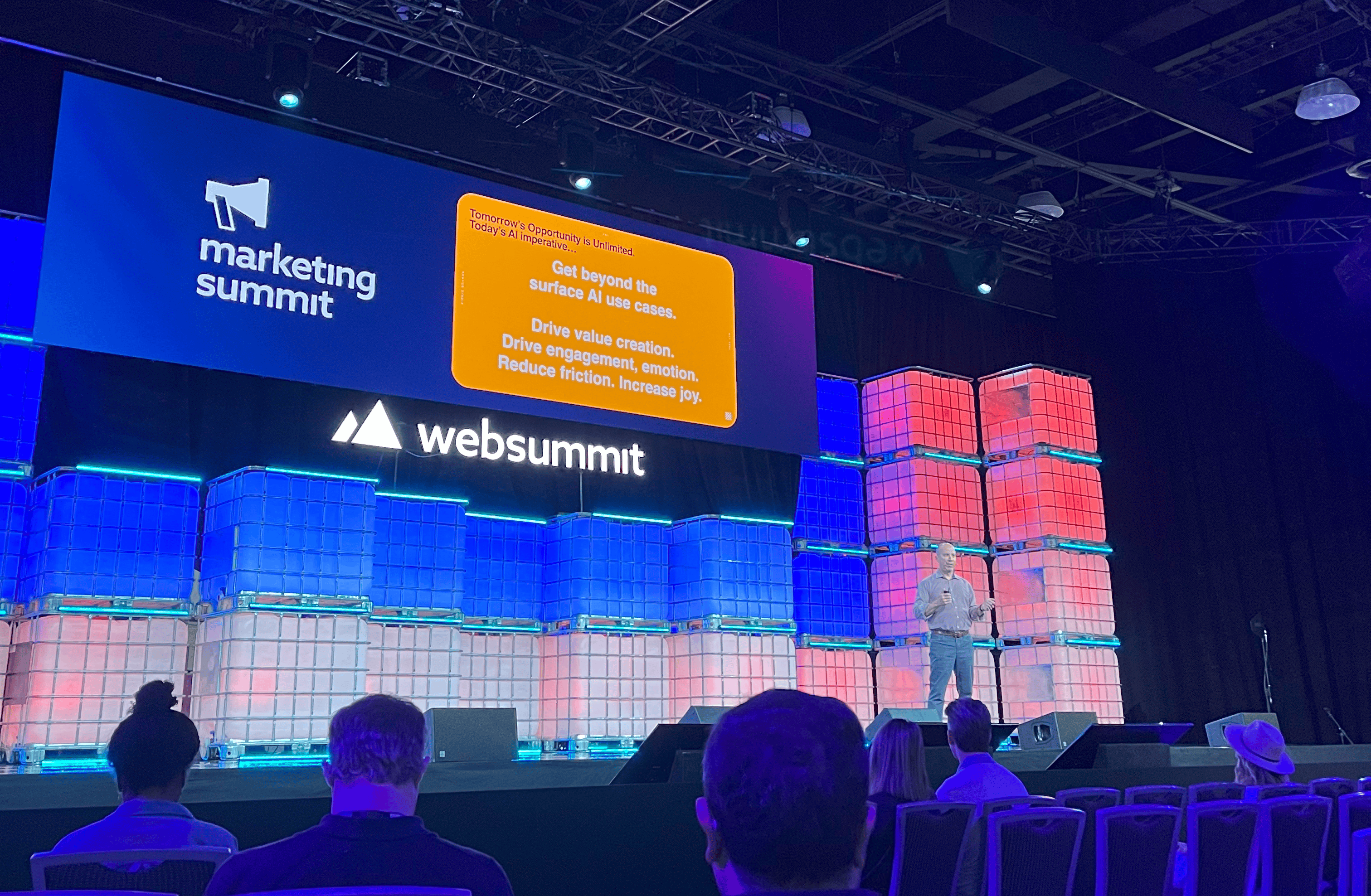
Final takeaway
From human-centred UX to brand storytelling to the creative magic of “waste,” Web Summit reminded our design team that the best way to be human in your craft is to stay human in an automated world.
Stay tuned for more insights from our team in the next post of the Web Summit Recap Series.
